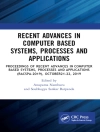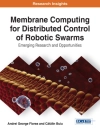This book presents, in a comprehensive way, current unmanned aviation regulation, airworthiness certification, special aircraft categories, pilot certification, federal aviation requirements, operation rules, airspace classes and regulation development models.
It discusses unmanned aircraft systems levels of safety derived mathematically based on the corresponding levels for manned aviation. It provides an overview of the history and current status of UAS airworthiness and operational regulation worldwide. Existing regulations have been developed considering the need for a complete regulatory framework for UAS. It focuses on UAS safety assessment and functional requirements, achieved in terms of defining an “Equivalent Level of Safety”, or ELOS, with that of manned aviation, specifying what the ELOS requirement entails for UAS regulations. To accomplish this, the safety performance of manned aviation is first evaluated, followed by a novel model to derive reliability requirements for achieving target levels of safety (TLS) for ground impact and mid-air collision accidents.It discusses elements of a viable roadmap leading to UAS integration in to the NAS.
For this second edition of the book almost all chapters include major updates and corrections. There is also a new appendix chapter.
Table of Content
1 Introduction.- 1.1 What’s in a name . . .UAV or UAS?.- 1.2 Motivation and Rationale.- 1.3 On Regulating Safety.- 1.4 Book Objectives and Outline.- References.- 2 Aviation History and Unmanned Flight.- 2.1 Precursors of Flight and Unmanned Aircraft.- 2.2 1916–1944.- 2.3 The Machines of the Cold War.- 2.4 Modern Systems.- 2.5 Remarks.- References.- 3 Current Manned Aviation Regulation.- 3.1 Introduction.- 3.2 Airworthiness Certification.- 3.2.1 Type Certificate.- 3.2.2 Standard Certificates.- 3.2.3 Special Certificates.- 3.3 Special Aircraft Categories.- 3.3.1 Vehicles.- 3.3.2 R/C Models.- 3.4 Pilot Certification.- 3.5 FAR Operation Rules.- 3.5.1 Flight Rules.- 3.5.2 Emergency Rules.- 3.5.3 Maintenance Requirements.- 3.6 Airspace Classes.- 3.7 Regulation Development Models.- References.- 4 Unmanned Aircraft Systems Regulation.- 4.1 Introduction.- 4.2 International Civil Aviation Organization.- 4.3 United States.- 4.3.1 RTCA.- 4.3.2 ASTM.- 4.3.3 SAE.- 4.3.4 Current Certification Paths and Operational Guidelines.- 4.4 Europe.- 4.4.1 EASA.- 4.4.2 EUROCONTROL.- 4.4.3 EUROCAE.- 4.4.4 Other European Union Activities.- 4.4.5 National Activities.- 4.5 Australia.- 4.6 Canada.- 4.7Japan.- 4.8 International UAS Associations.- 4.9 Light and Small UAS.- 4.9.1 United States.- 4.9.2 Europe.- 4.10 Military Regulations.- 4.10.1 United States.- 4.10.2 Europe.- 4.10.3 NATO.- References.- 5 UAS Safety Assessment and Functional Requirements.- 5.1 Equivalent Level of Safety.- 5.1.1 Manned Aviation Requirements.- 5.1.2 Derivation of an ELOS for UAS.- 5.2 UAS Accident Types.- 5.3 Ground Impact Fatality Risk Modeling.- 5.3.1 Ground Impact ELOS.- 5.3.2 Exposure to Ground Impact Accidents.- 5.3.3 Probability of Fatality of Exposed Persons.- 5.3.4 Frequency of Ground Impact Accidents.- 5.4 Mid-air Collision Fatality Risk Modeling.- 5.4.1 Mid-air Collision ELOS.- 5.4.2 Exposure and Risk of Fatality.- 5.4.3 Conflicting Trajectory Expectation.- 5.4.4 Collision Probability.- 5.5 Model Choice.- 5.6 Translating an Accident TLS to System Reliability Requirements.- 5.7 Risk Mitigation.- References 6 Case Studies ..- References.- 7 Thoughts and Recommendations on a UAS Integration Roadmap.- 7.1 Regulation Development.- 7.1.1 Applications.- 7.1.2 Flight Characteristics.- 7.1.3 Sacrificability.- 7.1.4 Pilot Physically Removed from Cockpit.- 7.1.5 UAS as Systems.- 7.1.6 Take-off Weight.- 7.1.7 Passengers and Cargo.- 7.1.8 Payload ..- 7.1.9 Operational Security.- 7.2 Operational Risk Reference System.- 7.3 UAS Classification.- 7.3.1 Classification Based on Ground Impact Risk.- 7.3.2 Classification Based on Mid-air Collision Risk.- 7.3.3 Classification Based on Autonomy.- 7.3.4 Other Classifications.- 7.4 Certification Paths.- 7.5 Equipment Certification.- 7.6 Operator Training and Certification.- 7.7 Technology Issues.- 7.7.1 Collision Avoidance.- 7.7.2 Sensors.- 7.7.3 Communications.- 7.7.4 Power and Propulsion Systems.- 7.7.5 Launch, Recovery and Flight Termination Systems.- 7.8 Technology Testing and Evaluation.- References.- 8 Epilogue.- 8.1 Why UAS?.- 8.2 UAS for Military Applications and Related Challenges.- 8.3 UAS for Civilian Applications: Challenges and Issues.- 8.4 Challenges, Enabling Technologies.- 8.5 The Road Ahead.- References.- Glossary.- References.- A Human Vulnerability.- A.1 Injury Types and Severity.- A.2 Vulnerability Modeling Considerations.- A.3 Vulnerability Models.- A.3.1 Vulnerability Thresholds.- A.3.2 Log-normal Vulnerability Models.- A.3.3 The Viscous Criterion (VC) and the Blunt Criterion (BC).- A.3.4 Penetrating Injuries.- References.- B Ground fatality probability model sensitivity analysis.- B.1 Background.- B.2 Analysis.- B.2.1 Kinetic Energy at Impact Results.- B.2.2 Parameter a Results.- B.2.3 Sheltering Factor Results.- B.3 Discussion.- References.- C UAS Reference.- Index.












